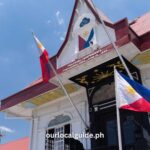Exploring the Canvas of Time: Famous Paintings in the Philippines
The Philippines, a country rich in history and culture, offers a vibrant palette of artistic expressions that capture the essence of its people, landscapes, and historical moments. Here, art is not just a form of aesthetic pleasure but a narrative of the nation’s soul, woven into the fabric of its history and societal evolution.
This article aims to shine a spotlight on some of the most celebrated paintings by Filipino artists, artworks that have not only defined the artistic landscape of the country but have also played pivotal roles in its cultural and political narratives.
Spoliarium by Juan Luna (1884)
An epic canvas that delves into the dark corridors of Roman gladiatorial battles, “Spoliarium” is more than a painting; it’s a poignant commentary on human suffering and colonial subjugation. Juan Luna’s magnum opus, housed in the National Museum of Fine Arts in Manila, captures the grim fate of fallen gladiators, drawing a parallel to the colonial experience of the Filipino people (Sugbo.ph, 06-11-2022; Learnodo Newtonic).
Planting Rice by Fernando Amorsolo (1951)
Fernando Amorsolo, with his masterful use of light and color, brings to life the quintessential Philippine pastoral scene in “Planting Rice”. This artwork not only celebrates the hardworking Filipino farmer but also evokes a sense of national pride and unity in the face of adversity (Sugbo.ph, 06-11-2022; Learnodo Newtonic).
Madonna of the Slums by Vicente Manansala (1950)
A striking depiction of urban poverty and the resilience of the human spirit, “Madonna of the Slums” employs Manansala’s signature transparent cubism to portray a mother and child against the backdrop of city shanties. This painting resides in the National Museum Collection of the Philippines, reflecting the socio-economic challenges and hopes of post-war Filipinos (Sugbo.ph, 06-11-2022; Phillife.co).
The Builders by Victorio Edades (1928)
Marking a departure from classical traditions, “The Builders” is a celebration of modernism and the Filipino working class. Housed in the Cultural Center of the Philippines, Manila, Edades’ work is a testament to the progress and industrious spirit of the Filipino people (Learnodo Newtonic).
The Parisian Life by Juan Luna (1892)
This impressionist painting, located in the National Museum of Fine Arts, Manila, captures a seemingly ordinary moment in a Paris café but is laden with historical significance. The artwork subtly includes key figures of the Philippine Revolution, offering a glimpse into Luna’s world of art, activism, and exile (Sugbo.ph, 06-11-2022; Phillife.co).
Sabel by Benedicto Cabrera (1965)
Benedicto Cabrera, or BenCab, as he is fondly known, introduces us to “Sabel”, a recurring subject in his works that symbolizes the plight and resilience of marginalized individuals in the Philippines. This painting, displayed in the BenCab Museum in Baguio City, is a poignant reminder of the struggles faced by the disenfranchised (Sugbo.ph, 06-11-2022).
Yellow Confetti by Benedicto Cabrera (1984)
Another masterpiece by BenCab, “Yellow Confetti” captures the spirit of the 1986 EDSA People Power Revolution. Through this artwork, Cabrera immortalizes the collective courage of Filipinos and their triumph over dictatorship, making it an emblem of democratic resilience (Phillife.co).
Each of these paintings not only showcases the technical prowess and unique perspectives of Filipino artists but also serves as a window into the nation’s soul, reflecting its struggles, triumphs, and enduring hope. Through their canvases, these artists invite us to explore the depths of Filipino identity, culture, and history.
Conclusion
The Philippines’ rich tapestry of history, culture, and art is vividly portrayed through the masterpieces of its artists. Each painting tells a story, evoking emotions and provoking thought, reflecting the nation’s past and present.
These artworks are not only a feast for the eyes but also a testament to the Filipino spirit, resilience, and identity.
















